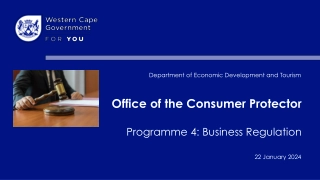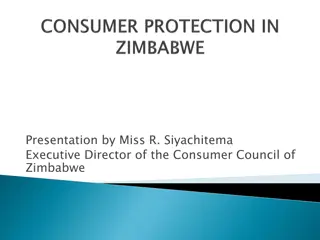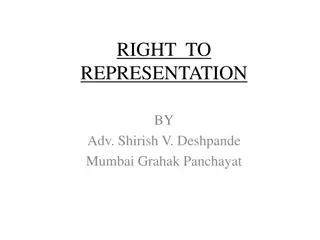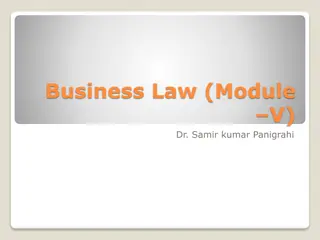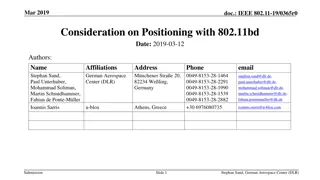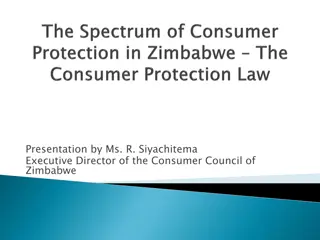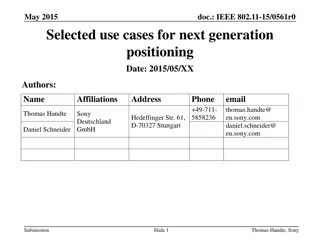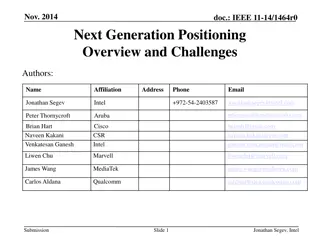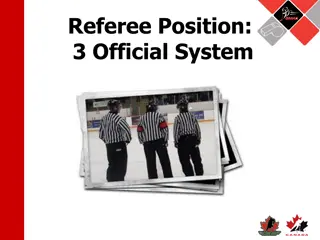
Consumers Segments and Positioning of Formula One Racing
Formula One targets consumer segments such as white-dominated sport enthusiasts, middle to higher-class males, and corporate audiences, primarily in developed countries. The sport has seen shifts in audience demographics and sponsor interests over the years. Despite efforts to diversify, Formula One remains a male-dominated market attracting middle-class individuals alongside a growing female audience, with a focus on high-end following and middle-class interests.
Uploaded on | 0 Views
Download Presentation

Please find below an Image/Link to download the presentation.
The content on the website is provided AS IS for your information and personal use only. It may not be sold, licensed, or shared on other websites without obtaining consent from the author. If you encounter any issues during the download, it is possible that the publisher has removed the file from their server.
You are allowed to download the files provided on this website for personal or commercial use, subject to the condition that they are used lawfully. All files are the property of their respective owners.
The content on the website is provided AS IS for your information and personal use only. It may not be sold, licensed, or shared on other websites without obtaining consent from the author.
E N D
Presentation Transcript
What are the consumer segments targeted and what is the positioning of Formula One?
What are the consumer segments targeted? White dominated sport Male Middle higher classes Individuals in developed countries middle aged demographic Corporate audiences
Evidence for F1 targeting these consumer segments
White dominated sport and the Lewis Hamilton effect Evidence of Lewis Hamilton effect Attracting attention of the black community (Guardian 2007) Group of famous black footballers are trying to increase interest in motorsport (Guardian 2007) Personality and drama surrounding Lewis Hamilton is good for the sport (Guardian 2015)
White dominated sport and the Lewis Hamilton effect (2) Evidence for the Lewis Hamilton effect being overestimated Hamilton ranked 4thfavourite driver before Silverstone in a survey (Telegraph 2015) Black fans feel uncomfortable in the stadium (Guardian 2007) 8 years after Hamilton s emergence: still few black people directly involved in F1
Male dominated market 61% male audience in Italian Grand Prix and 78% audience in Holland (Media Metrie 2009) F1 s audience shifts to 40% female (SE Sponsorship 2015) However, sponsors said they weren t interested
Middle classes are targeted Sponsors are attracted to F1 because of their high end following (Blog Exponential 2013) The F1 audience is generally interested in middle high class characteristics and activities (Blog Exponential 2013) More interested in wine than beer (Blog Exponential 2013) The Financial Times (2015) say that the fabric of F1 s global audience is largely middle class
Targeting individuals in developed countries Most Grand Prix are situated in developed countries: Where there is a larger, wealthy middle class segment Formula one is also targeting developing countries where there is a potential for or an already large middle class audience Examples: India, Brazil and Malaysia
Middle aged segments Bernie Ecclestone says it s pointless chasing a younger audience (Sky Sports 2014) Because it s non-profitable and hard to know what the younger audience wants (Sky Sports 2014) UK F1 fans are the most likely of the major sports to be middle aged (Blog Exponential 2013)
Corporate audiences Corporate audiences are invited to all the Grand Prix s so business relationships can develop Entrance to the paddock brings in global business leaders, politicians and decision makers (Financial Times 2015) F1 is seen as the sport with the best business-to- business reach (Financial Times 2015). In 2015, F1 teams are starting to work together to offer their sponsors and partners shared networking opportunities at races in the VIP areas (Financial Times 2015).
What is the positioning of F1? Positioning helps to create a perception of the products in the minds of target audience. Therefore F1 creates an image that will cater towards white, middle class, middle aged males in developed countries
How F1 positions itself to the target market A history and strong image of elitism (Yacht viewing at Monaco: bottom left) (GP Racing Plus 2013) Companies like Martini sponsors Williams F1 team (bottom right) Elitism and specific sponsors identify with status seeking middle - higher classes Many celebrities, politicians and powerful individuals come to watch F1 which also attracts status seeking middle classes
How F1 positions itself to the target market (2) Masculine image e.g. grid girls are merely decorations whose presence serves as a foil for Formula One s masculine image (Stange et al. 2011) Displays brand personality features of sophistication and ruggedness Sophistication represents class and charm middle classes Ruggedness represents masculinity and strength (Rosenberger and Donahay 2008)
How F1 positions itself to the target market (3) Race weekend ticket prices at Silverstone (2015) (Silverstone 2015) 3 day adult: 175 3 day child: (0-15 years old) 87.50 This prices out the working class segment and encourages families as an attraction for middle aged parents Race Director Charlie Whiting stated that simplifying Formula One for a younger audience is unfeasible (James Allen on F1 2014) Showing no interest other than attracting middle aged segments Leading figure of Bernie Ecclestone is a symbol of how backward and old fashioned F1 is.
References GP Racing Plus (2013) Visit GP Racing Plus website. Available at: http://gpracingplus.com/en/specials/item/4081-the-long-story-of-formula-1s-elitism (Accessed on 27/10/2015) Guardian (2015) Visit Guardian website. Available at: http://www.theguardian.com/sport/2015/oct/21/lewis-hamilton-f1-us-grand-prix-bobby-epstein (Accessed 26/10/2015) James Allen on F1 (2014) Visit James Allen on F1 website. Available at: http://www.jamesallenonf1.com/2014/07/charlie-whiting-simplifying-formula-one-is-unfeasible/ (Accessed on 27/10/2015) Media Metrie, (2009). Formula One on TV Worldwide: A Global Event. [online] Available at: http://www.mediametrie.com/television/communiques/telecharger.php?f=1ff8a7b5dc7a7d1f0 ed65aaa29c04b1e. [Accessed 27 Oct. 2015]. Rosenberger, P., & Donahay, B. (2008). Brand personality differentiation in Formula One motor racing: An Australian view. Marketing Bulletin, 19(2), 1-14. Silverstone (2015) Visit Silverstone website. Available at: http://www.silverstone.co.uk/events/2016-formula-1-british-grand-prix/tickets (Accessed on 27/10/2015) Sky Sports (2014) Visit Sky Sports website. Available at: http://www.skysports.com/f1/news/12433/9563692/bernie-ecclestone-believes-its-pointless-for- f1-to-a-chase-a-new-younger-audience (Accessed on 27/10/2015) Telegraph (2015) Visit Telegraph website. Available at: http://www.telegraph.co.uk/sport/motorsport/formulaone/11713760/British-Grand-Prix-where- Lewis-Hamiltons-popularity-will-be-put-to-the-test.html (Accessed 26/10/2015) Zeiss Stange, M., Oyster, C. K., Sloan, J. E., (eds.) (2011) Encyclopedia of women in today s world, Los Angeles: Sage. Finanical Times (2015) Visit Fincial Times website. Available at: http://www.ft.com/cms/s/0/b8b6275e-b141-11e4-831b-00144feab7de.html#axzz3qXxWJtCL (Accessed on 04/11/2015) Blog Exponential (2013) Visit Blog Exponential website. Available at: http://blog.exponential.com/en- gb/2013/11/22/how-to-target-fans-of-the-worlds-most-expensive-sport/ (Accessed on 25/11/2015)

